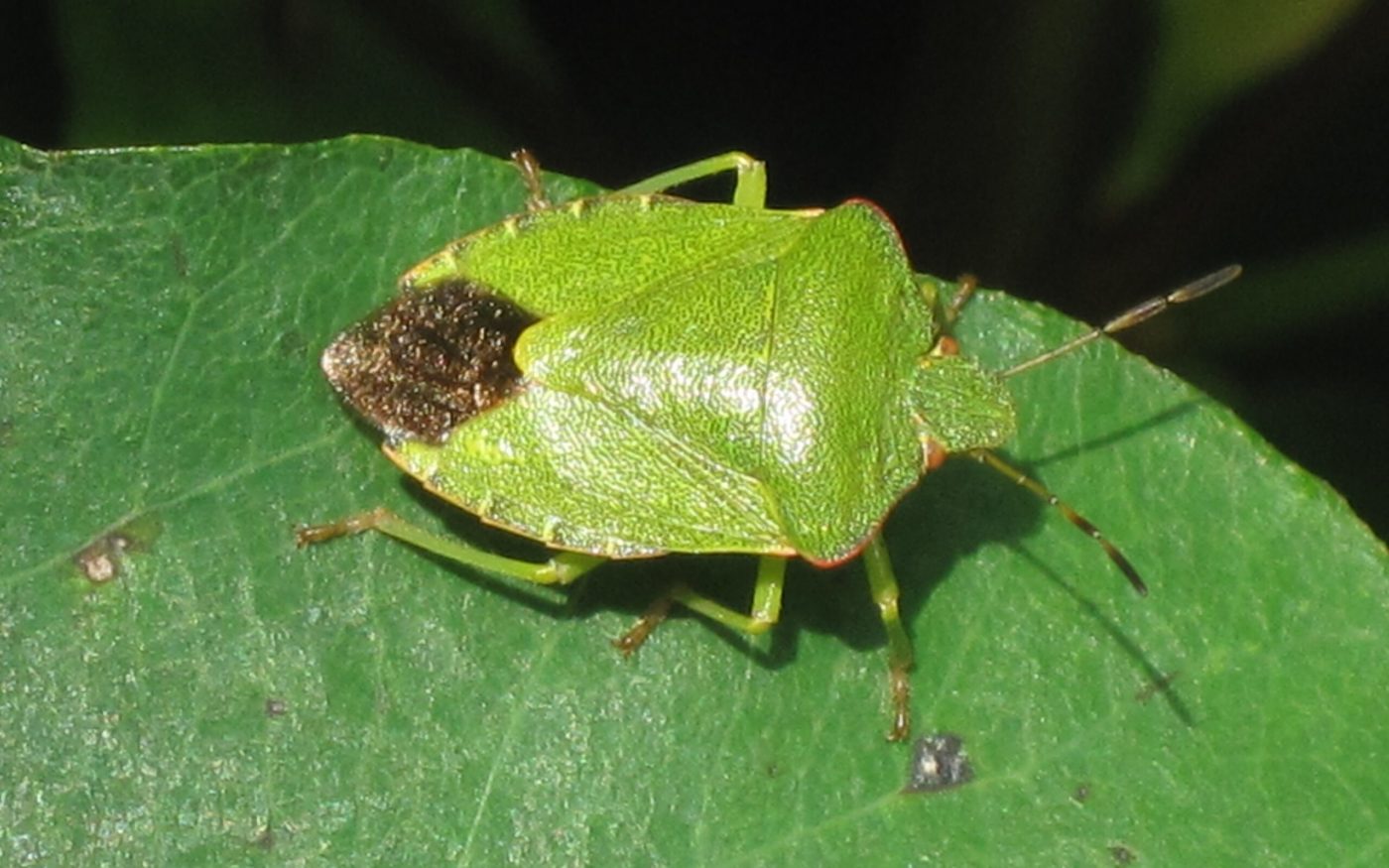Order
True bugs
True bugs have mouthparts that are specialized for piercing and sucking: most feed on plant juices though some are predators. They include plant-bugs, bed-bugs, water-boatmen, aphids, leafhoppers, froghoppers, and (in warmer climates) cicadas.
What do they look like?
The Green Shieldbug is well named: it is a shield-shaped bug and – at least in the summer – it is mostly bright green (though it becomes darker and browner towards the autumn). It grows to a length of about 15 mm. Like all similar bugs, it has a distinctive triangular plate on its back between the hardened sections of the folded forewings. The entire upper surface is green except for the overlapping membranous sections of the wings at the rear of the body, which appear brownish. Their antennae have five segments (as opposed to the shorter four-segmented antennae of most other groups of bug).
Where do they live?
The Green Shieldbug is found in hedgerows, grasslands and woodland edges. It is also common on horticultural crops and in nearby roadside vegetation.
Where can they be found?
This species is found in much of Europe, and in the eastern and southern states of the USA. It is widespread in the British Isles, though it is sparsely distributed in Scotland.
Life cycle
Female Green Shieldbugs lay several groups of 20-30 barrel-shaped eggs on plant leaves, up to 200 eggs per female. These hatch into wingless nymphs that crawl between plants to feed. The life cycle from egg to adult takes about six weeks, and there can be two or more generations per year in the summer season. They hibernate for the winter as adults.
What do they do?
Their coloration camouflages them well amongst the greenery on which they feed: they are bright green during the summer, then turn darker green to brown in the autumn.
Did you know?
The Green Shieldbug’s alternative name – Green Stink Bug – refers to the smell that it leaves as a trail over fruit and vegetation. If it is present in large numbers, this can taint and spoil a crop. The insects also produce this smell if handled or disturbed.

